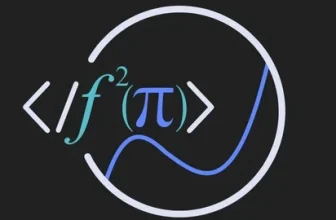Machine Learning: Natural Language Processing in Python (V2)

NLP: Use Markov Models, NLTK, Artificial Intelligence, Deep Learning, Machine Learning, and Data Science in Python
Product Brand: Udemy
4.8
Udemy Coupon Code for Machine Learning: Natural Language Processing in Python (V2) Course. NLP: Use Markov Models, NLTK, Artificial Intelligence, Deep Learning, Machine Learning, and Data Science in Python
Created by Lazy Programmer Inc, Lazy Programmer Team | 15.5 hours on-demand video course
Natural Language Processing in Python Course Overview
Machine Learning: Natural Language Processing in Python (V2)
Ever wondered how AI technologies like OpenAI ChatGPT, GPT-4, DALL-E, Midjourney, and Stable Diffusion really work? In this course, you will learn the foundations of these groundbreaking applications.
In part 1, which covers vector models and text preprocessing methods, you will learn about why vectors are so essential in data science and artificial intelligence. You will learn about various techniques for converting text into vectors, such as the CountVectorizer and TF-IDF, and you’ll learn the basics of neural embedding methods like word2vec, and GloVe.
In part 2, which covers probability models and Markov models, you’ll learn about one of the most important models in all of data science and machine learning in the past 100 years. It has been applied in many areas in addition to NLP, such as finance, bioinformatics, and reinforcement learning.
In part 3, which covers machine learning methods, you’ll learn about more of the classic NLP tasks. This section will be application-focused rather than theory-focused, meaning that instead of spending most of our effort learning about the details of various ML algorithms, you’ll be focusing on how they can be applied to the above tasks.
In part 4, which covers deep learning methods, you’ll learn about modern neural network architectures that can be applied to solve NLP tasks. Thanks to their great power and flexibility, neural networks can be used to solve any of the aforementioned tasks in the course.
What you’ll learn
- How to convert text into vectors using CountVectorizer, TF-IDF, word2vec, and GloVe
- How to implement a document retrieval system / search engine / similarity search / vector similarity
- Probability models, language models and Markov models (prerequisite for Transformers, BERT, and GPT-3)
- How to implement a cipher decryption algorithm using genetic algorithms and language modeling
- How to implement spam detection
- How to implement sentiment analysis
- How to implement an article spinner
- How to implement text summarization
- How to implement latent semantic indexing
- How to implement topic modeling
- Machine learning (Naive Bayes, Logistic Regression, PCA, SVD, Latent Dirichlet Allocation)
- Deep learning (ANNs, CNNs, RNNs, LSTM, GRU) (more important prerequisites for BERT and GPT-3)
- Hugging Face Transformers (VIP only)
- How to use Python, Scikit-Learn, Tensorflow, +More for NLP
- Text preprocessing, tokenization, stopwords, lemmatization, and stemming
- Parts-of-speech tagging and named entity recognition
Recommended Natural Language Processing Course
Deep Learning and NLP: Seq2Seq Model Theory + ChatGPT Prizes
Deep Learning and NLP: Seq2Seq Model Theory + ChatGPT Prizes
Learn the theory of Seq2Seq in only 2 hours! A straight to the point Deep Learning and NLP: Seq2Seq Model Theory + ChatGPT Prizes course for those of you who don’t have a lot of time. Embark on an academic adventure with our specialized online course, meticulously designed to illuminate the theoretical aspects of Seq2Seq (Sequence to Sequence) models within the realms of Deep Learning and Natural Language Processing (NLP).
Natural Language Processing (NLP) in Python with 8 Projects
Natural Language Processing (NLP) in Python with 8 Projects
Complete Natural Language Processing (NLP) with Spacy & NLTK. This Natural Language Processing (NLP) in Python with 8 Projects course has 10+ Hours of HD Quality video, and following content. Welcome In this section we will get complete idea about what we are going to learn in the whole course and understanding related to natural language processing. Installation & Setup In this section we will get our online environment Google Colab setup. Basics of Natural Language Processing In this section we will dive into all basic NLP task like Tokenization, Lemmatization, stop word removal, name entity recognition, part of speech tagging, and see how to apply with different functions available in a Spacy and NLTK library.
Who this course is for
- Anyone who wants to learn natural language processing (NLP)
- Anyone interested in artificial intelligence, machine learning, deep learning, or data science
- Anyone who wants to go beyond typical beginner-only courses on Udemy
Best Natural Language Processing (NLP) Course for 2024
Complete Data Science,Machine Learning,DL,NLP Bootcamp Best seller
Learn BERT – most powerful NLP algorithm by Google
Intro to Natural Language Processing in Python for AI
Taught by Lazy Programmer Inc.














